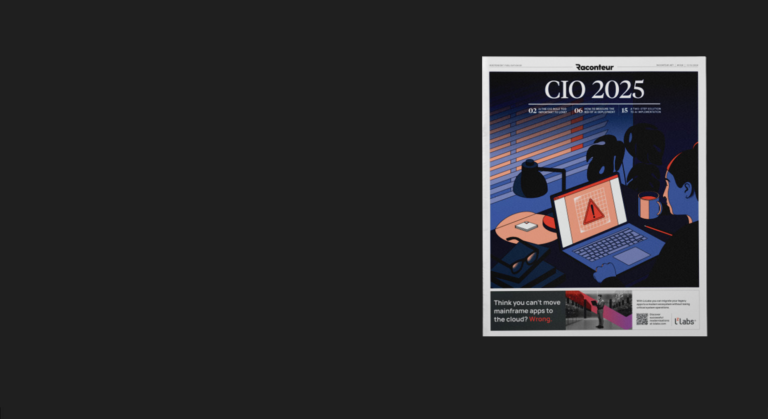That is the rule, not the exception, in the financial services sector. Obviously, the application owners would know. But those mainframe experts are reaching retirement age and what they are leaving behind is a puzzle to everyone else. For many of our customers the mainframe is often a mystery. And yet, the business logic of their core applications performs critical business processes—such as printing or, in general, creating documents that reach customers. Enterprise architects have little interest in fixing what is not broken.
Let’s think about that for a moment. Core mainframe applications that perform reliably are the embodiment of Business as Usual. Will business-as-usual enterprise computing help propel the organisation to be more agile, improve time-to-market and turn running costs into innovation investment?
Back to printing. Let’s look at a printing architecture we recently discovered at a large European insurance firm. Printing might seem a straightforward place to start for any digitization and modernisation effort. However, the insurance industry has been comparatively slow in embracing enterprise IT modernisation. Insurance is a highly regulated sector and risk-averse business, so insurers may be among the last organisations to become fully paperless. Nonetheless, there are still plenty of stages in the document production process where policy documentation is available in digital formats.
Map the whole landscape
Contrary to expectations and even common sense, the typical document generation process in the insurance business is complicated and multifaceted. A multitude of third-party products are woven into mainframe architectures to control aspects of the legacy environment Advanced Function Presentation (AFP) suite. In our example, the customer’s printing application was dependent upon third-party products for document composition together with Papyrus Server (and probably 10 other products) for final print and output management. Very little was known about how this architecture worked: How does it print? What does it print? Where are the commands given and received, and when does it go onto paper (or not)? How is this decided?
Together with the client’s Enterprise Architecture and Mainframe Services teams, LzLabs Discovery specialists developed an architecture map of the company’s printing application and the roles played by applications in the enrichment of documents within the legacy environment.
Lay the foundation for modernisation
This step was a prerequisite to understanding the applications’ functions and interdependencies. This insight allowed the client to explore whether distributed solutions could achieve the same (or better) results. The LzLabs Discovery analysis laid the foundation for future modernisation, wherein new technologies could make paperless processing a realistic and achievable goal—and thus leave business-as- usual behind, empowered by application modernisation.
Beyond business-as-usual lie open-source and distributed environments. LzLabs’ Software Defined Mainframe® (SDM) provided a bridge to feed legacy data into new print facilities, integrating non- mainframe printing solutions with the client’s printing applications which were migrated to SDM running on Linux.
Using our Linux implementations of the LzOnlineTM and LzBatchTM subsystems, and implementing a PostgreSQL database in place of DB2® and IMSTM DB management systems, we were able to deploy the client’s printing applications, together with its existing architecture components, in a distributed environment. This enables the client to adapt modern printing technologies, for example cutting-edge content management systems that allow end users to manage documents themselves and interact with other users, and so on.
Avoid the temptation to replicate processes
This is just an example of how rehosting mainframe applications on open systems enables the modernisation of seemingly straightforward processes—a modernisation that would be a major challenge in a legacy environment.
Meanwhile, though, legacy infrastructure continues to consume a disproportionately large amount of IT budget while providing limited modernisation options that are flexible enough. Customers feel locked-in and have second thoughts about offloading workloads to modern platforms such as cloud.
But it doesn’t have to be like that. Modernisation can be gradual, incremental, ensuring interoperability between migrated applications and those that remain on the mainframe. When rehosting applications in distributed environments, we don’t try to replicate mainframe processes, because distributed environments work differently. Rather, we look for logical intersection points where the output from the mainframe system and applications can be fed into an entirely modern way of solving the same business problem—for example, printing insurance contracts and policies.
To know more about how we can help you modernise your mainframe applications, follow this link.



